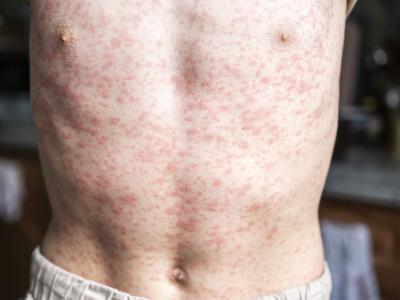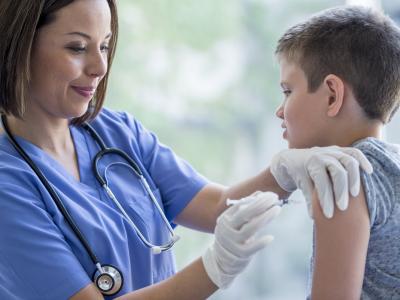Two MERS vaccines safe and produce immune response, studies find
Middle East respiratory syndrome (MERS) vaccines in England and Germany have demonstrated safety and immune response in phase 1 trials, becoming the second and third such vaccines to do so, according to studies yesterday in The Lancet Infectious Diseases.
In the UK non-randomized, uncontrolled trial, researchers gave 24 participants 18 to 50 years old a low dose, medium dose, or high dose of the monkey adenovirus-vectored ChAdOx1 MERS vaccine from Mar 14 to Aug 15, 2018.
They found that a single dose of all concentrations of the vaccine was safe and well tolerated at all doses but that only higher doses improved immunogenicity at 12 months.
In the German trial, researchers gave 23 participants 18 to 55 years old two low or high doses of modified vaccinia virus Ankara (MVA)-MERS-S vaccine 28 days apart from Dec 17, 2017, to Jun 5, 2018. Six healthy, unvaccinated adults served as controls for immunogenicity analyses.
The vaccine produced no serious or severe adverse events and generated humoral and cellular responses. The higher dose more often was tied to minor adverse events such as swelling at the injection site than the low-dose version, but it demonstrated no difference in immune response.
In a commentary on the studies, Kayvon Modjarrad, MD, PhD, of Walter Reed Army Institute of Research in Silver Spring, Maryland, and Jerome Kim, MD, of the International Vaccine Institute in Seoul, South Korea, said that MERS-CoV, the coronavirus that causes MERS, has prepared vaccine researchers and developers to quickly advance coronavirus vaccine development, such as for SARS-CoV-2, the virus that causes COVID-19.
"To stay ahead of these increasingly frequent outbreaks, the field must maintain momentum in advancing rapid, scalable, and translatable vaccine strategies, not only for MERS-CoV, but even more urgently for SARS-CoV-2 and, ultimately, the next novel coronavirus that leaps from its animal host to humans," they wrote.
Results of the first MERS vaccine to undergo a first-in-human trial, Inovio's GLS-5300 MERS coronavirus DNA vaccine, were published in the same journal in July 2019.
Apr 20 Lancet Infect Dis study (UK)
Apr 20 Lancet Infect Dis study (Germany)
Apr 20 Lancet Infect Dis commentary
Jul 24, 2019, Lancet Infect Dis study, commentary, and news release
Younger adults, octogenarians most at risk for flu death, study shows
A study of US national data shows that adults 80 and older and those 20 to 64 years old are more likely to die in the first 30 days of flu-related hospitalization than those aged 65 to 79.
In the retrospective cohort study, published in Clinical Microbiology and Infection, researchers analyzed data from the Nationwide Readmission Database on patients hospitalized with a primary or secondary diagnosis of the flu.
They found that, of the 134,306 patients hospitalized with the flu from 2013 to 2014, 41.4% were 20 to 64 years old (adults), 27.4% were 65 to 79 (older adults), and 31.1% were 80 and older (octogenarians). Older adults were most likely to have asthma (42.49%), cancer (7.68%), and metastatic tumors (1.73%), while octogenarians were most likely to have heart attack (8.89%), congestive heart failure (28.16%), and cerebrovascular disease (3.08%).
Both the in-hospital 30-day death rate and overall in-hospital death rate were highest in octogenarians (2.89% and 2.93%, respectively; P < 0.001 for both). And in a three-way propensity score–weighted comparison, both the in-hospital 30-day mortality and overall in-hospital mortality were lowest in the older adult group (1.37% and 1.44%, respectively, P < 0.001 compared with the other two age-groups). In a direct comparison, the youngest age-group (adults) had a 33% higher risk of 30-day hospital mortality than the older adults did.
Mean Charlson comorbidity score was highest in older adults (1.95 ± 0.02 P < 0.001), indicating a higher risk of death within 1 year than in the other groups, while the median All Patients Refined Diagnosis Related Groups (APR-DRG) was highest in octogenarians (1.88; IQR: 1.14; P < 0.001), also indicating a higher risk of death.
Adults were given the most supportive treatment, with 8.41% (P < 0.001) receiving mechanical ventilation and 0.25% receiving extracorporeal membrane oxygenation, which corresponded to the highest daily in-hospital costs of the three groups.
The authors conclude, "These data emphasize the importance of prevention and suggest the need for more tailored treatment interventions based on risk stratification that includes age."
Apr 20 Clin Microbiol Infect study









